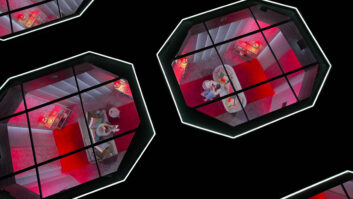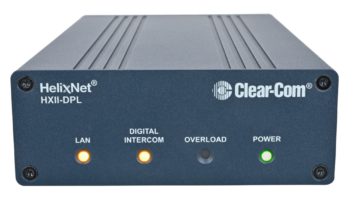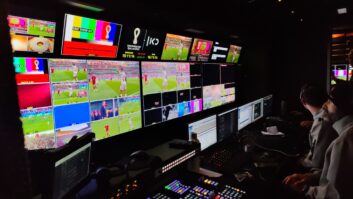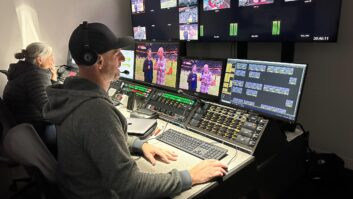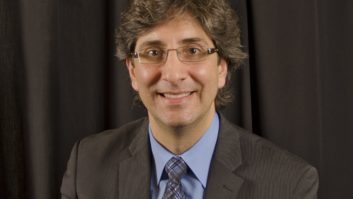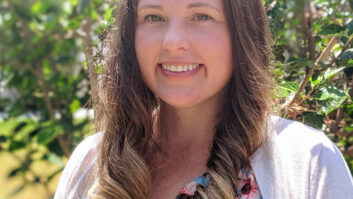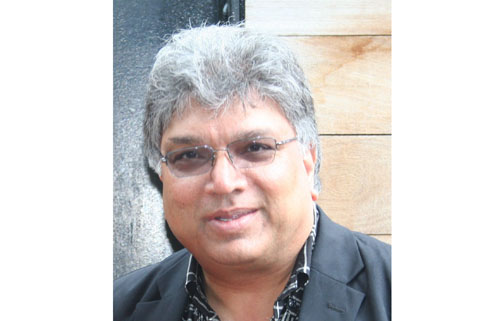
“We’re in a Wild West of files,” says MC Patel, CEO of audio software specialist Emotion Systems. We caught up with Patel, via phone, during his recent trip to Australia, where he was advising on audio Loudness standards Down Under.
MC Patel will be a speaker at TVBEurope’s IT Broadcast Workflow conference on 8 July and will be taking part in a special panel discussion on the issues around audio Loudness. IT Broadcast Workflow is the UK’s top day-long conference on topics related to file-based workflow for the TV industry. Tickets are still available at the ITBW website.
TVBEurope: Have file-based workflows streamlined production or made our jobs more complicated?
MC Patel: What file-based workflows allow is a more flexible delivery method. When we had a tape-based workflow we were generally relying on a single delivery point, broadcast transmission. File-based workflow allows you to deal more easily with different levels of video quality. A transmission for broadcast might be SD or HD, but transmission for mobile could be at a lower resolution, or – as Netflix are doing – at a higher resolution like 4K. File-based workflow lends itself to being able to create these multiple masters and distribute them more easily. Whereas a tape-based workflow is generally specific to a resolution.
TVBEurope: How far along are we in the transition from tape to file-based workflows? Almost done? Will tape always be with us?
MC Patel: We’re not really done with tape. There are a lot of operations that are based around tape, and there’s a huge amount of efficiency that’s come about because of our familiarity with how we use tape. So we’re not done with it, but of if you can imagine having to do 45 versions of tape, that’s a lot more expensive than 45 versions of file.
It will be an evolution rather than a revolution. Generally broadcasters have 5 or 7 year cycles of replenishment or refurbishment. So if you were to refurbish now, you would never go back to tape. You would go file-based, because that’s the way of the future. But I’ll be the first to say that file-based is not easy yet. The rationale for companies like ours is to try to find ways of making it easier. A lot of the file-based technology hasn’t really been designed around saving money or making life easier.
TVBEurope: You’ll be participating in a panel discussion on Loudness compliance at our IT Broadcast Workflow conference. Many in the industry have difficulty grasping what the issues around Loudness are really about. What are the main points that people need to focus on?
MC Patel: The first thing to understand is why we went to Loudness as opposed to what we had before, which is peak-based measurement? The reason is using a Loudness-based measurement or delivery standard gives you better potential for creative audio. Using the average audio level of a programme it gives you the opportunity to balance the dynamic range and use the whole dynamic range of the spectrum, whereas a peak-based measurement didn’t relate to the range of audio we could use.
The peak was really designed for certain limitations we had in our transmission standards. The reason we did peak-based measurement was so that the sound didn’t interfere with the colour quality of the television signal in transmission. Whereas now we have digital transmission or a wide different ways of transmitting content.
A good way to think of the shift is like the transition to decimalisation. It made life easy for us, but people like me still think in feet and inches. It’s a significant change for someone who has to do it for a living, but it’s not a change that’s difficult to overcome.
TVBEurope: What are some of the big challenges now in broadcast audio?
MC Patel: Our challenge now is we’re in a Wild West of files. There’s a lots of variations and there’s a lots of ways of doing things. MXF as a standard is so flexible, DPP have come up with a much tighter definition of file layout and structure. And interestingly, what the DPP are doing is also being closely followed by a number of other countries and content providers. The file structures were originally defined and designed for lots of flexibility. What DPP have said is, if we have a clearer definition of what is expected when you deliver content, then file-based workflow gets easier.
Now the controversial thing is that if you’re doing your editorial in SVP or Avid, you now need to deliver your material to DPP spec and none of the editorial systems natively work to that DPP spec.
TVBEurope: So what really happened with the dialogue intelligibility problem in BBC’s Jamaica Inn?
MC Patel: This will be a diplomatic answer: Essentially there’s a combination of events. The primary issue seems to be that the actors weren’t articulating themselves comprehensively. But it’s also acknowledged there were some technical issues with the way the sound was mixed.
The bigger issue is audio is becoming an important component in the television experience. And it’s becoming more critical for two reasons. The first is that the flat screen has very poor speakers. The thinner we make our TV sets, the poorer the audio will become. The second thing is, the mixing practices are increasingly driven not on technical merit of content but on creative merit. And I think this is really where the real clue is.
I did a little experiment a few weeks ago where I took 70 or 80 DVD’s from my collection and measured the loudness range and the programme loudness of that content and there’s a huge variation in it. When I looked at the Batman series, for example – great favorites of mine – there is continuous background music, and that music is often so loud it’s impossible to hear the dialogue properly. That’s a creative decision – they’re creating a tension and mood for the scene – but if you want to hear the dialogue, good luck.
Compare that to another movie, Zero Dark Thirty, that has all the excitement and great tension, but it’s beautifully mixed for dialogue intelligibility. And I think what happened to Jamaica Inn – that combination of creativity and technical skills got kind of confused.
TVBEurope: What issues are Emotion Systems tackling right now?
MC Patel: One of the things we’ve been working on is loudness range. There are challenges when someone has theatrical mix with an extremely wide loudness range and needs to make a broadcast mix or a mix for video on demand – for online and tablets.
The problem with a mix for mobile is you have a much noisier environment and much poorer speakers. What we’re looking at doing is creating some audio processing, where you can create different versions of audio – for broadcast or for listening on a mobile device in a potentially noisier environment. We want to make a decent audio experience, no matter what the device is.
